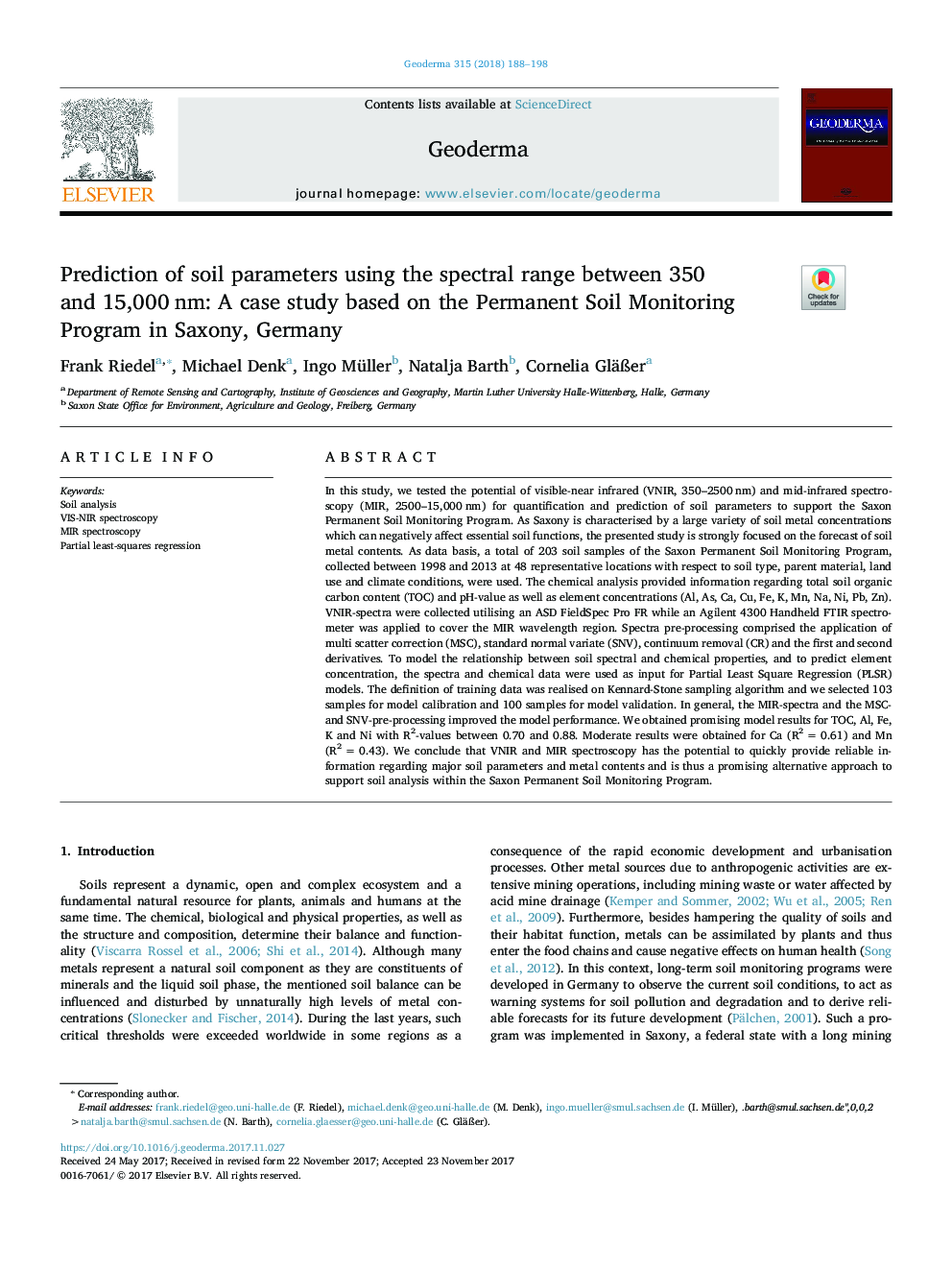| Article ID | Journal | Published Year | Pages | File Type |
|---|---|---|---|---|
| 8894294 | Geoderma | 2018 | 11 Pages |
Abstract
In this study, we tested the potential of visible-near infrared (VNIR, 350-2500Â nm) and mid-infrared spectroscopy (MIR, 2500-15,000Â nm) for quantification and prediction of soil parameters to support the Saxon Permanent Soil Monitoring Program. As Saxony is characterised by a large variety of soil metal concentrations which can negatively affect essential soil functions, the presented study is strongly focused on the forecast of soil metal contents. As data basis, a total of 203 soil samples of the Saxon Permanent Soil Monitoring Program, collected between 1998 and 2013 at 48 representative locations with respect to soil type, parent material, land use and climate conditions, were used. The chemical analysis provided information regarding total soil organic carbon content (TOC) and pH-value as well as element concentrations (Al, As, Ca, Cu, Fe, K, Mn, Na, Ni, Pb, Zn). VNIR-spectra were collected utilising an ASD FieldSpec Pro FR while an Agilent 4300 Handheld FTIR spectrometer was applied to cover the MIR wavelength region. Spectra pre-processing comprised the application of multi scatter correction (MSC), standard normal variate (SNV), continuum removal (CR) and the first and second derivatives. To model the relationship between soil spectral and chemical properties, and to predict element concentration, the spectra and chemical data were used as input for Partial Least Square Regression (PLSR) models. The definition of training data was realised on Kennard-Stone sampling algorithm and we selected 103 samples for model calibration and 100 samples for model validation. In general, the MIR-spectra and the MSC- and SNV-pre-processing improved the model performance. We obtained promising model results for TOC, Al, Fe, K and Ni with R2-values between 0.70 and 0.88. Moderate results were obtained for Ca (R2Â =Â 0.61) and Mn (R2Â =Â 0.43). We conclude that VNIR and MIR spectroscopy has the potential to quickly provide reliable information regarding major soil parameters and metal contents and is thus a promising alternative approach to support soil analysis within the Saxon Permanent Soil Monitoring Program.
Related Topics
Physical Sciences and Engineering
Earth and Planetary Sciences
Earth-Surface Processes
Authors
Frank Riedel, Michael Denk, Ingo Müller, Natalja Barth, Cornelia GläÃer,
